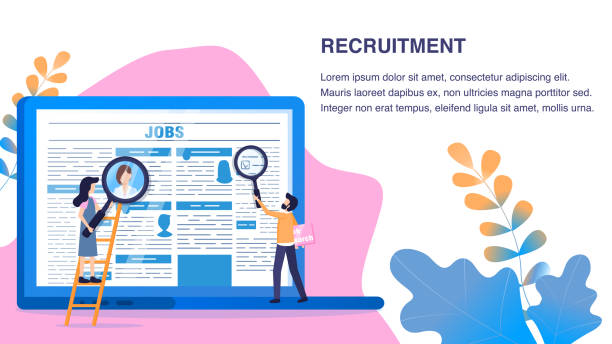Introduction to On-Page SEO and its Importance in Ranking
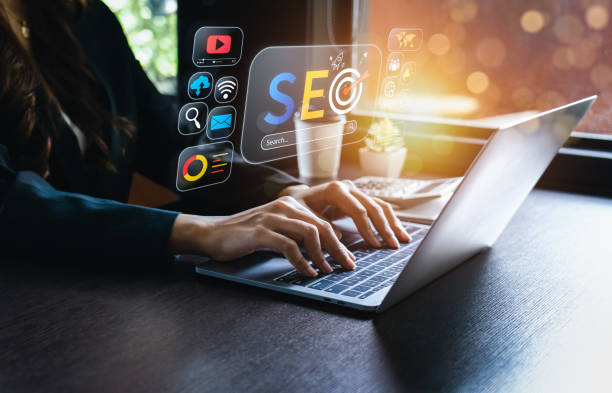
#On_Page_SEO is the cornerstone of any successful search engine optimization strategy.
This area refers to all activities you perform within your website to improve your page rankings in search results.
Unlike off-page SEO, which deals with external factors like backlinks, on-page SEO has complete control over various aspects.
A deep understanding of on-page SEO is crucial for every webmaster or digital marketer.
This includes optimizing content, site structure, and HTML elements.
The main goal of on-page SEO is to help search engines better understand your page content and its relevance to user queries.
When Google clearly understands your content, the likelihood of it appearing for relevant searches significantly increases.
This section provides an educational and explanatory approach to the foundation of this concept.
Without a strong foundation in on-page SEO, even the best off-page SEO campaigns may not yield the desired results.
In other words, on-page SEO plays the role of the foundation upon which other SEO components are built.
In today’s competitive era, where quality content is abundant, the main difference lies in how it is presented and optimized for search engines.
Search engine optimization is no longer an option, but a necessity, and on-page SEO is its heart.
To ensure your efforts yield results, you must pay attention to every detail within the site.
Important elements include meta tags, headings, content quality, page loading speed, and internal links, all of which fall under the umbrella of on-page SEO.
We will discuss each of these elements in detail below.
Understanding these concepts will help you not only achieve a better ranking but also provide a better user experience for your visitors.
Are you falling behind in the competition with large online stores?
Rasaweb makes your business online with professional e-commerce website design and increases your market share!
✅ Increase brand credibility and customer trust
✅ Easy shopping experience leads to more sales
⚡ Take action now to receive a free website design consultation!
Keyword Research for Effective On-Page SEO Strategy
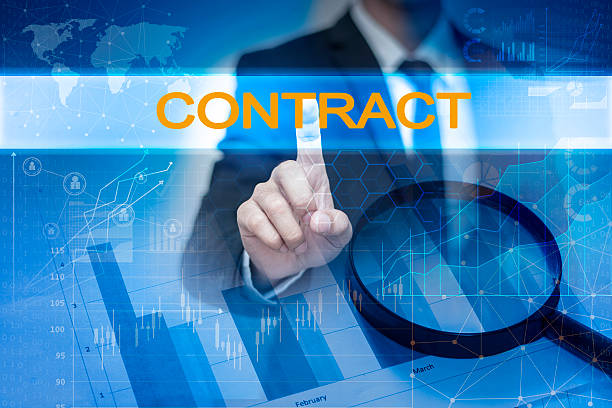
#Keyword_Research is an inseparable part of every #Successful_SEO strategy, especially for on-page SEO.
Before you even write a single line of content, you need to know what your audience is searching for.
Choosing the right keywords is the starting point for producing relevant and high-traffic content.
This process involves identifying the words and phrases users type into search engines to find information, products, or services similar to what you offer.
A specialized and precise guide to keyword research helps you not only identify high-volume keywords but also find long-tail keywords, which often have less competition and higher conversion rates.
Using tools like Google Keyword Planner, Ahrefs, Semrush, and Moz Keyword Explorer can be very useful in this regard.
These tools provide you with information about search volume, competition level, and related keywords.
You should also pay attention to User Intent.
Is the user looking for information (Informational), intending to buy (Commercial), or seeking a specific website (Navigational)? Understanding search intent helps you create content that precisely addresses user needs.
For example, if the keyword is “best camera,” the user is looking for comparisons and information, not necessarily an immediate purchase.
If the keyword is “buy Nikon D750 camera,” the user intends to purchase.
Therefore, your content should be tailored to these goals.
Naturally incorporating primary and secondary keywords into the content without overdoing it (Keyword Stuffing) is of high importance.
A strong keyword research strategy ensures that your on-page SEO efforts are focused on the right and most productive path.
This initial step provides the foundation for all subsequent optimizations.
Optimizing Title Tags and Meta Descriptions
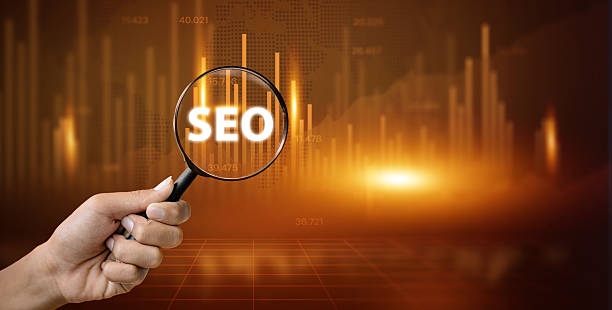
#Title_Tag and #Meta_Description are among the first things users and search engines see in search results.
These two HTML elements play a vital role in click-through rate (CTR) and how search engines understand your page content.
Precise optimization and specialized optimization is a crucial part of on-page SEO.
The page title should include your main keyword, but also be engaging, concise, and descriptive.
The ideal length for a page title is usually between 50 to 60 characters, as anything longer will be truncated in search results.
This title directly influences users’ decisions to click on your link.
Meta descriptions, although not directly impacting rankings, heavily influence CTR.
A good meta description should provide a summary of the page’s content, include the main keyword, and encourage users to click.
The appropriate length for a meta description is around 150-160 characters.
Ensure that each page has a unique and relevant title and meta description.
Use keywords naturally and avoid excessive repetition (keyword stuffing), as it can have a negative impact.
This section provides a practical guide and explanation for improving these key on-page SEO elements.
Using numbers, questions, and calls to action (CTA) in meta descriptions can increase the click-through rate.
For example, if your title is “10 Best On-Page SEO Methods,” the meta description could include “Learn how to boost your site’s ranking with 10 on-page SEO techniques. Step-by-step and proven guide!”
This approach helps users immediately understand the value of your content, and search engines better grasp the topical relevance of the page.
Table 1: Comparison of Title Tag and Meta Description
| Feature | Title Tag | Meta Description |
|---|---|---|
| Main Goal | Announce page topic to search engines and users, direct impact on ranking | Summarize content, encourage user clicks, indirect impact on ranking (via CTR) |
| Display Location | Top of browser tab, main title in search results | Below title in search results |
| Ideal Length | 50-60 characters | 150-160 characters |
| Keyword Importance | Very High (Must include main keyword) | Medium (helps stand out in search) |
| Impact on CTR | Very High | Very High |
URL Structure and Its Optimization for Search Engines

#URL_Structure is one of the often-overlooked but vital elements in #On_Page_SEO.
A good URL not only helps search engines understand page content but also improves user experience.
The URL should be short, descriptive, and contain primary keywords.
Avoid complex, long, or confusing character URLs.
As an important guideline, the URL should act like a brief description of the page’s content.
For example, instead of “yourdomain.com/p?id=12345”, use “yourdomain.com/on-page-seo-comprehensive-guide”.
This type of URL clearly shows what the page is about and helps users and search engines decide whether to click or index it.
Using hyphens (-) to separate words instead of underscores (_) or spaces is an accepted standard.
Also, try to keep URLs as short as possible.
Long URLs are less memorable and may get truncated when shared on social media.
The URL structure should be logical and hierarchical.
For example, if you have a site about cars, the URL could be “yourdomain.com/cars/bmw/x5-model”.
This structure shows search engines that the X5 page is a sub-category of BMW, which itself is a sub-category of cars.
This explanatory and specialized guide for URL structure helps you create a clean and optimized site architecture that significantly aids your on-page SEO.
Adhering to these tips helps increase your website’s crawlability and indexability.
Remember that the URL is one of the signals Google uses to understand your content.
Thus, choosing the right URL is a vital part of Google’s SEO guide.
Do you dream of a thriving online store but don’t know where to start?
Rasaweb is your comprehensive e-commerce website design solution.
✅ Attractive and user-friendly design
✅ Increase sales and revenue⚡ Get free consultation
The Importance of Quality Content and Its Structure in On-Page SEO
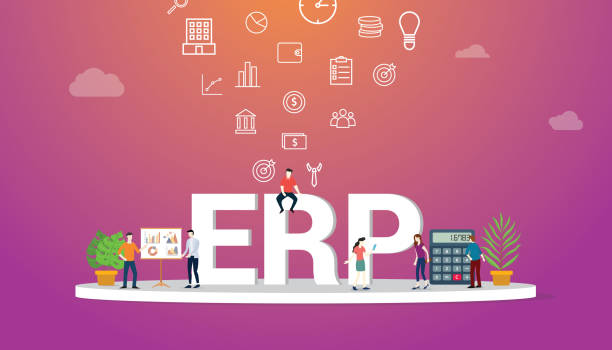
#Quality_Content is the backbone of #On_Page_SEO.
Even with all technical optimizations, without valuable content, your site cannot rank at the top.
Search engines are increasingly focusing on the quality and relevance of content to the user’s search intent.
Your content should be original, comprehensive, and valuable.
This means providing complete answers to user questions, covering various aspects of a topic, and offering unique perspectives.
This section provides an analytical and educational approach to understanding the role of content in on-page SEO.
Content structure is equally important.
Proper use of Heading tags (H1, H2, H3, etc.) helps search engines and readers understand the information hierarchy.
H1 should be used for the main title of the page (usually once per page) and include the main keyword.
H2 and H3 are used for subtitles and sub-sections.
This structure not only aids SEO but also significantly improves text readability.
Using short paragraphs, bulleted lists, and relevant images also helps improve user experience and keep the audience engaged.
Thought-provoking and engaging content can reduce bounce rate and increase user dwell time on the site, all of which are positive signals for search engines.
To ensure quality, regularly update your content and remove outdated information.
Also, ensure that your content is well-researched and sourced from reputable origins.
This approach adds to your site’s Authority and Trustworthiness, both of which are very important in modern ranking algorithms, especially with an emphasis on E-E-A-T (Experience, Expertise, Authoritativeness, Trustworthiness).
Optimizing Images and Multimedia Files for On-Page SEO
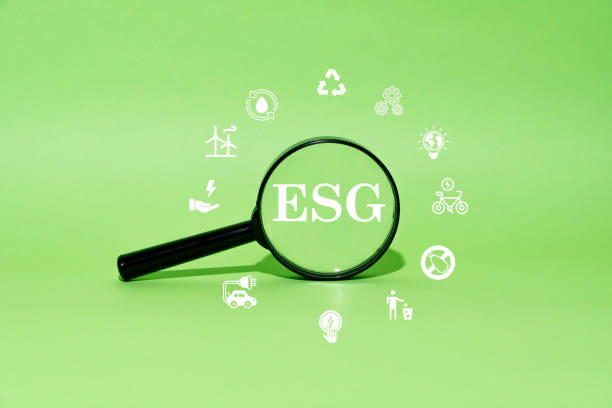
#Images and other #Multimedia_Files play a significant role in #On_Page_SEO and user experience.
Optimizing these elements can help improve your ranking in image search results as well as page loading speed.
This section provides a specialized and comprehensive guide for media optimization.
The first step is compressing images to reduce their size without significantly affecting their quality.
Tools like TinyPNG, Compressor.io, or WordPress plugins such as Smush or Imagify can be helpful in this regard.
Large images can severely reduce page loading speed, which is an important factor in Google’s ranking and user experience.
The second step is using appropriate Alt Text (alternative text).
Alt Text provides a description of the image for search engines and visually impaired users.
This text should include a keyword relevant to the image and accurately describe the image’s content.
For example, for an image of a new laptop, the Alt Text could be “new XYZ model laptop with i7 processor”.
This not only helps with SEO but also improves your website’s accessibility.
The third tip is to name image files descriptively.
Instead of “IMG_12345.jpg”, use a name like “best-canon-camera.jpg”.
This helps search engines better understand the image content.
Fourth, choose the appropriate image format.
WebP and AVIF formats are more efficient than JPEG and PNG and can further reduce file size.
Fifth, adjust image dimensions to suit the page’s needs.
Uploading an image with 4000×3000 pixels and displaying it at 400×300 pixels wastes bandwidth and reduces speed.
These actions are an important part of overall on-page SEO optimization for your site and significantly improve user experience.
Internal Linking and User Experience Improvement

#Internal_Linking is one of the most powerful #On_Page_SEO tools that is often overlooked.
Internal links are links that connect one page of your website to another page on the same website.
These links play three key roles: 1.
User Navigation Aid: They help users easily navigate your website and find relevant content, which in turn improves user experience (UX).
2.
Search Engine Aid: They help search engine crawlers discover and index your site’s pages and understand your site’s structure.
3.
Page Authority Distribution: They distribute value and authority (Link Equity) throughout your website.
This section provides a comprehensive guide and analytical approach to structuring effective internal links.
Using descriptive and relevant anchor texts (Anchor Text) in internal linking is crucial.
Instead of using “click here,” use phrases containing keywords relevant to the destination page, for example, “on-page SEO tools“.
Creating a hierarchical and logical internal linking structure that branches from the homepage to categories and then to more detailed pages helps search engines understand the relative importance of your pages.
Also, ensure that your site’s important pages have more internal links from other pages to gain more value and authority.
A strong internal linking strategy signals to search engines that your website has deep and relevant content that is well-organized.
This not only helps with on-page SEO but also leads to a reduction in bounce rate and an increase in user dwell time on your site.
The more users stay on your site and view more pages, the more positive signals are sent to Google.
Table 2: Key Principles of Effective Internal Linking
| Principle | Explanation | Importance in On-Page SEO |
|---|---|---|
| Descriptive Anchor Text | Using relevant and keyword-rich text in links (Example: “Complete On-Page SEO Guide” instead of “here”) | Very High: Helps search engine understand destination page content |
| Hierarchical Structure | Linking from more important pages to less important ones in a logical structure (Example: Homepage -> Category -> Product) | High: Improves Crawlability and Page Authority distribution |
| Deep Links | Linking to internal pages that are not at a higher navigation level so all pages are discovered | Medium: Ensures all valuable pages are indexed |
| Appropriate Number of Links | Avoiding too many or too few links on a page (balance) | Medium: Maintains readability and prevents appearing as spam |
| Content Relevance | Linking only to internal content that is topically relevant to the current page | Very High: Increases topical authority and helps users |
The Role of Site Speed and Responsiveness in On-Page SEO

#Site_Speed and #Responsiveness (Mobile-Friendliness) are two very important factors in #On_Page_SEO and user experience.
Google is increasingly focusing on Core Web Vitals, a set of metrics related to page loading speed, interactivity, and visual stability.
A slow website can severely negatively impact your bounce rate, conversion rate, and ultimately, your ranking.
This section provides a news and specialized guide on the importance of these factors.
Search engines aim to provide the best possible experience for their users, and this includes offering websites that load quickly and display well on any device (mobile, tablet, desktop).
To measure your site’s speed, you can use tools like Google PageSpeed Insights, GTmetrix, and WebPageTest.
These tools identify your site’s weaknesses and provide solutions for speed improvement.
Image optimization, reducing HTTP requests, using browser caching, and improving server response time are among the key actions to increase site speed.
Also, given that a significant portion of internet traffic today comes from mobile devices, your website’s responsiveness is a requirement, not an option.
Google uses a Mobile-First Indexing approach, meaning it prefers the mobile version of your site for indexing and ranking.
Ensure that your website displays well and performs adequately across various screen sizes.
This not only helps your on-page SEO but also significantly improves user experience, encouraging more visitors to stay on your site and engage with your content.
Failure to pay attention to these two factors can cost you a large portion of your audience and competitors.
Does your current e-commerce website design lead to lost customers and sales?
Rasaweb is your solution with modern and user-friendly e-commerce website designs!
✅ Significant increase in conversion rate and sales
✅ Strong branding and building customer trust
⚡ Get a free e-commerce website design consultation from Rasaweb!
Technical Review and Required Tools for On-Page SEO
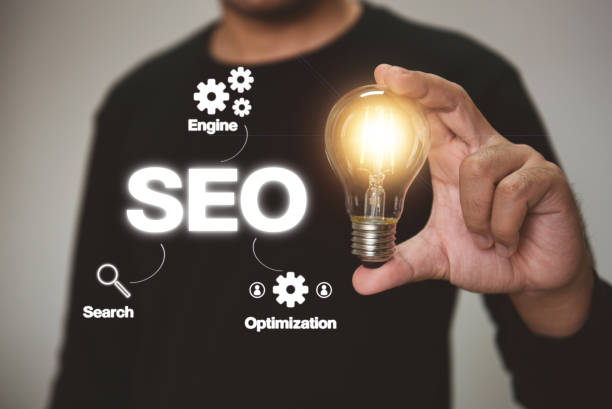
#On_Page_SEO is not limited to content; #Technical_Aspects of the website also play a very important role.
Ensuring the technical health of the site helps search engines easily crawl and index your pages.
This section provides an educational and explanatory guide for technical reviews and introduces essential tools for on-page SEO.
One of the most important tools is Google Search Console.
This free tool provides vital information about your site’s performance in Google Search, including indexing status, crawl errors, responsiveness issues, and Core Web Vitals.
Sitemap.xml and Robots.txt files are also key technical elements.
The sitemap tells search engines which pages of your website should be crawled, while Robots.txt specifies which sections should not be crawled.
Ensuring these files are correct and up-to-date is very important for on-page SEO.
Checking for 404 errors (page not found) and 301 redirects (permanent redirection) is also essential for maintaining on-page SEO health.
Broken links ruin user experience and send negative signals to search engines.
Using tools like Screaming Frog SEO Spider or Ahrefs Site Audit can help you find and fix these issues.
Also, checking canonical tags is crucial to prevent duplicate content issues.
Canonical tags tell search engines which version of a page is the original and should be indexed.
Ensuring proper HTTPS implementation (site security) is also an important ranking factor.
Using an SSL certificate not only ensures user security but is also a positive signal for Google.
A regular technical audit can help identify and resolve hidden issues affecting your on-page SEO performance.
Future Trends and Advanced Tips in On-Page SEO
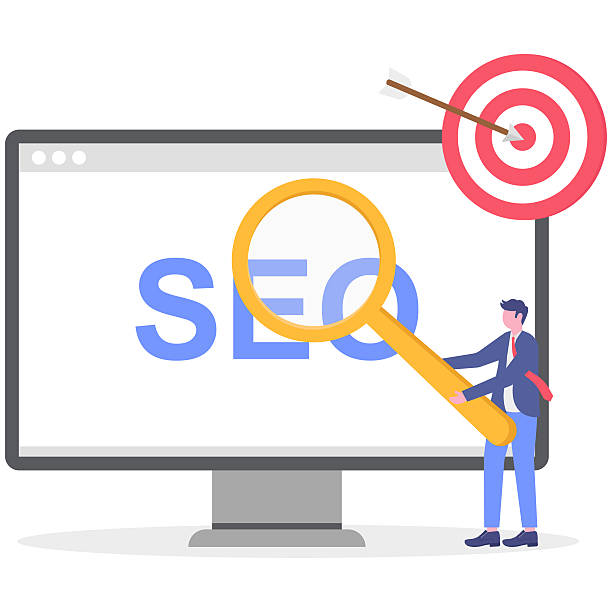
#SEO is an ever-evolving field, and #On_Page_SEO is no exception.
To maintain a competitive edge, it’s essential to be aware of future trends and advanced tips.
This section provides an analytical and engaging overview of what to expect in the future of on-page SEO.
One of the biggest trends is the increasing importance of Artificial Intelligence (AI) in search and content creation.
Google is increasingly using AI to understand page content and provide more accurate results.
This means your content should be optimized not just for keywords, but for Semantic Understanding and user search intent.
AI-generated content is also on the rise, but human-generated content with Experience, Expertise, Authoritativeness, and Trustworthiness (E-E-A-T) still holds more value.
Voice search is also growing and impacts how keyword research is done.
Users in voice search use longer, more conversational phrases.
Optimizing for long-tail keywords and answering common questions in content is essential for voice SEO.
Also, video content and podcasts are gaining popularity.
Optimizing these multimedia files using transcripts, detailed descriptions, and keywords can help your on-page SEO.
Attention to Zero-Click Searches (searches where the user gets their answer without clicking on results, e.g., via Featured Snippets) is also important.
Optimizing content for these formats with direct and concise answers can place you in these top positions.
Ultimately, focusing on a Holistic User Experience, which includes speed, usability, and providing valuable information, will remain the cornerstone of on-page SEO.
Websites that offer the best experience will win in the long run.
Frequently Asked Questions
| No. | Question | Answer |
|---|---|---|
| 1 | What is On-Page SEO? | On-page SEO refers to a set of actions performed within a website to optimize its pages and achieve a better ranking in search results. |
| 2 | What is the most important factor in on-page SEO? | High-quality, relevant, and comprehensive content that meets user needs is the most important factor in on-page SEO. |
| 3 | What role does the Title Tag play in on-page SEO? | The title tag is one of the most important factors that tells search engines and users what the page content is about. It should include the main keyword and be engaging. |
| 4 | How important is the Meta Description tag? | Although it does not directly affect ranking, it is very effective on the click-through rate (CTR) in search results and encourages users to visit the page. |
| 5 | How are images optimized in on-page SEO? | By using appropriate alt tags, compressing image size to increase loading speed, and meaningfully naming image files. |
| 6 | What is the importance of using headings (H1, H2, H3) in on-page SEO? | Headings help structure content, increase readability, and assist search engines in understanding the hierarchy and sub-topics of the content. |
| 7 | What is internal linking and what are its benefits? | Internal linking refers to creating links between different pages of a website. This helps in distributing authority, improving user navigation, and assisting search engine crawling. |
| 8 | Where should the focus keyword be placed on the page? | The main keyword should be placed in the title tag, meta description, H1, the first paragraph, and naturally throughout the text, and if possible, in the URL. |
| 9 | What impact does copied or duplicate content have on on-page SEO? | Duplicate content can harm a site’s ranking and confuse search engines about which version is original, potentially leading to it being identified as spam. |
| 10 | How important is page loading speed in on-page SEO? | Page loading speed is an important ranking factor and directly affects user experience. Slow pages increase user bounce rates. |
And other advertising services of Rasaweb Advertising Agency
Smart Digital Advertising: A fast and efficient solution for online growth with a focus on custom programming.
Smart Conversion Rate Optimization: A new service for increasing sales through Google Ads management.
Smart SEO: Designed for businesses seeking digital branding through Google Ads management.
Smart Custom Software: An effective tool for increasing sales through user experience customization.
Smart Customer Journey Map: Designed for businesses looking to increase click-through rates through Google Ads management.
And hundreds of other services in the field of internet advertising, advertising consultation, and organizational solutions
Internet Advertising | Advertising Strategy | Advertorial
References
Comprehensive SEO Guide
Important On-Page SEO Elements
What is On-Page SEO?
SEO Training Articles
? At Rasaweb Afarin, your dream for a powerful presence in the digital world becomes a reality. By providing comprehensive digital marketing services, including fast website design and professional optimization, we elevate your business to its peak.
📍 Tehran, Mirdamad Street, next to Central Bank, Southern Kazeroun Alley, Ramin Alley, No. 6



